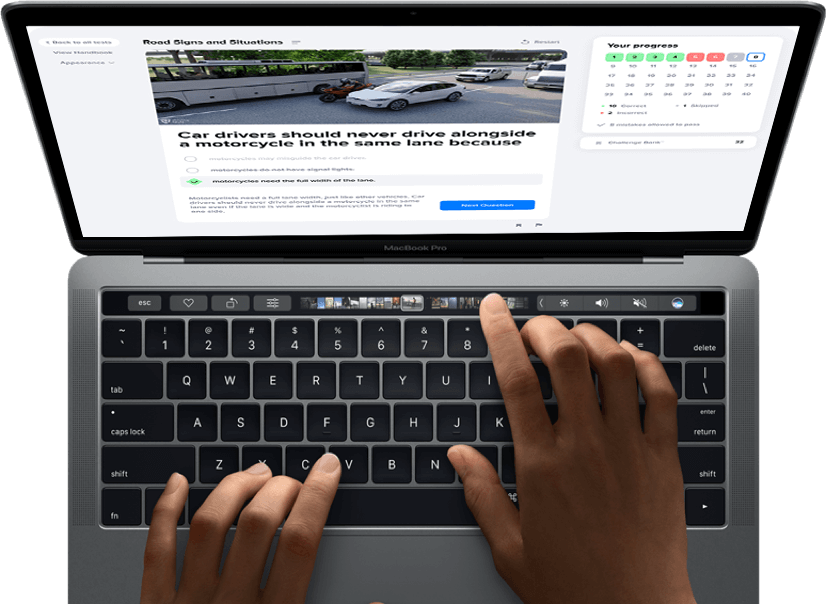Everyone has seen one of those car commercials that feature an exotic and powerful sports car whipping around a coastline of hairpin curves with ease. Unless you are a professionally trained stunt driver, the glamorous scenarios that are featured in these types of car advertisements can be deadly. Curvy roads cause all types of accidents, particularly if they are not driven on with extra caution.
You’re reading one of our “Beginner Driver’s Guide” articles. Need to practice for your upcoming exam? Take our free sample driving test -- no registration required! ✨
Whether you are driving around a curvy mountain pass or through a roundabout in your hometown, steering around curves can be tricky and potentially cause you to lose control of your vehicle. Keep the following tips in mind when driving on curvy roads in order to stay safe:
Here is how to drive on curvy roads.
7 Tips to Drive on Curvy Roads
- 1
All drivers need to have a basic understanding of why curvy roads are dangerous. When a vehicle rounds a curve, there are two types of motion occurring: the vehicle’s tires moving forward because of acceleration and the inertia of the body of the vehicle as it travels around the curve. The conflicting movements sometimes cause skidding, a hazardous driving situation. Now that you understand why curves in the road are dangerous, you can make sure that you take the required safety precautions.
- 2
Slow down! Most accidents that occur on curves could easily be prevented by reducing the speed of the vehicle. Reduce your speed before approaching a curve. Watch out for road signs warning of approaching curves so that you have ample time to slow down before steering through the curve. It is advisable to drive below the posted speed limit as you approach and drive through curves.
Never ignore curvy road signs![curvy road sign]()
- 3
Turn as little as possible. There is a specific method of driving through a curve that requires you to turn less. As you approach a curve, move to the side of your lane opposite of the direction of the curve. For example, if the road curves to the left, move to the right side of your lane. As you continue through the curve, position your vehicle towards the other side of your lane. Finally, exit the curve towards the side of the road that you began in. This driving strategy will reduce the severity of a curve and the risk of skidding.
- 4
If drivers are not careful to pay attention, they often veer towards either side of their lane while driving through curves. Make sure that you follow the above steering recommendations to avoid driving out of your lane. However, you must also keep watch for approaching drivers while rounding a curve. Approaching drivers who are driving too close to the center of the road while driving through a curve may put you in danger of a head-on collision. Additionally, you must make sure that you do not steer off the road by taking a curve too wide. If this happens, slow down and calmly steer your vehicle back onto the road. Avoid over-correcting or slamming on the breaks. The following video contains several typical mistakes that inexperienced drivers make on curvy roads:
- 5
Accelerate out of the curve. After you have safely driven through the curve, you can apply the accelerator and increase your speed. If you do this too early, however, you will risk skidding.
- 6
Drivers need to understand that when a vehicle skids, it is moving on its own, not because of the application of the accelerator. When a car is skidding, the accelerator, brakes, and steering wheel will not work as normal. Normal operational procedures are not likely to be successful.
- 7
Sometimes a vehicle will understeer, a type of skid that happens when the vehicle turns sharply and begins to slide on the slick sidewalls of the tires.
Understeering can be prevented by reducing the speed of your vehicle as you drive around curves.
If you do experience a skid while driving on a curvy road, there are several strategies you can use to help regain control of your car:
How To Regain Control of Your Car
- 1
Immediately take your foot off the brake and gas pedals. Neither will help stop the skid and could in fact make it worse. Keep both hands loosely positioned on the steering wheel. Do not make any sudden steering motions. This may cause you to overcorrect.
- 2
After the vehicle has had a couple of seconds to slow down, lightly apply the brake as you begin to steer the vehicle in the direction you want to travel. Here’s a smart piece of advice how to focus on your direction:
- 3
While recovering from a skid or understeer on a curvy road, do your best not to make any sudden movements. While skidding can be a frightening experience, it is important to remain calm and think clearly.
- 4
Many curvy roads are located on a steep incline, declines, ridgeways, or cliff areas. If this is the case when you experience a skid, you may have to take drastic measures to keep your vehicle from plunging off an embankment. Use common sense and weigh your options as much as possible as you try to regain control.
Curves can be killers. The main thing to remember when driving on curvy roads is that a small reduction in your speed will drastically reduce the probability of your vehicle skidding.






